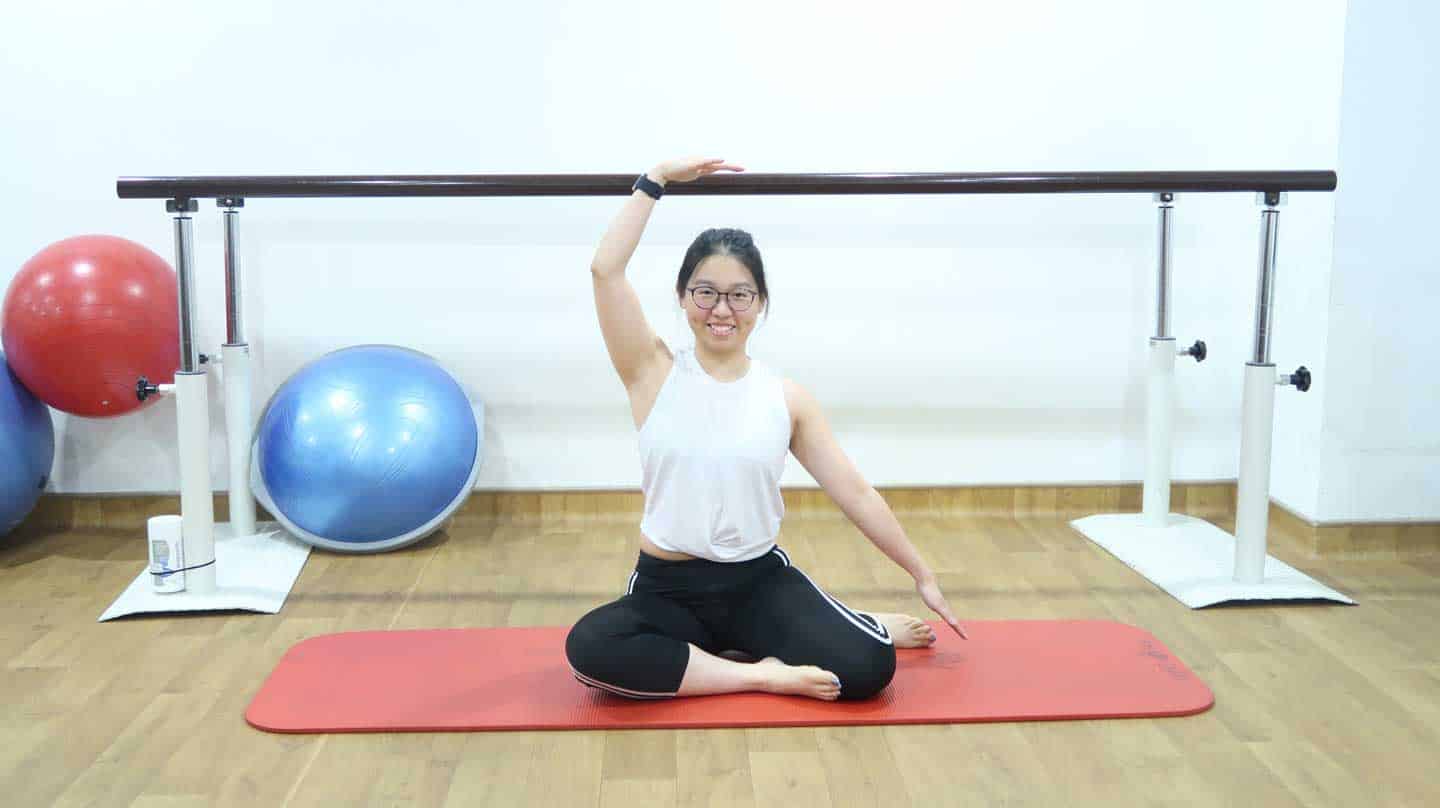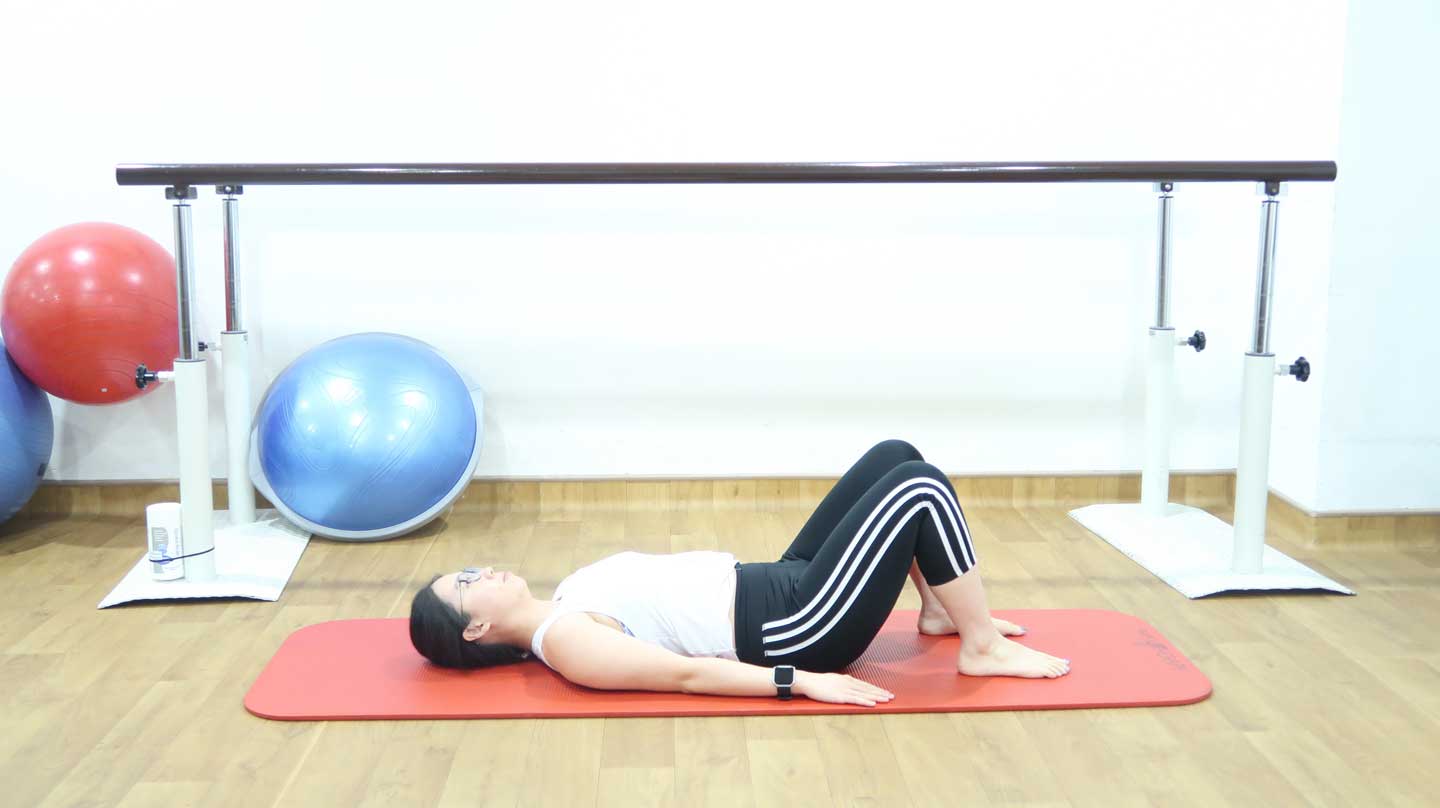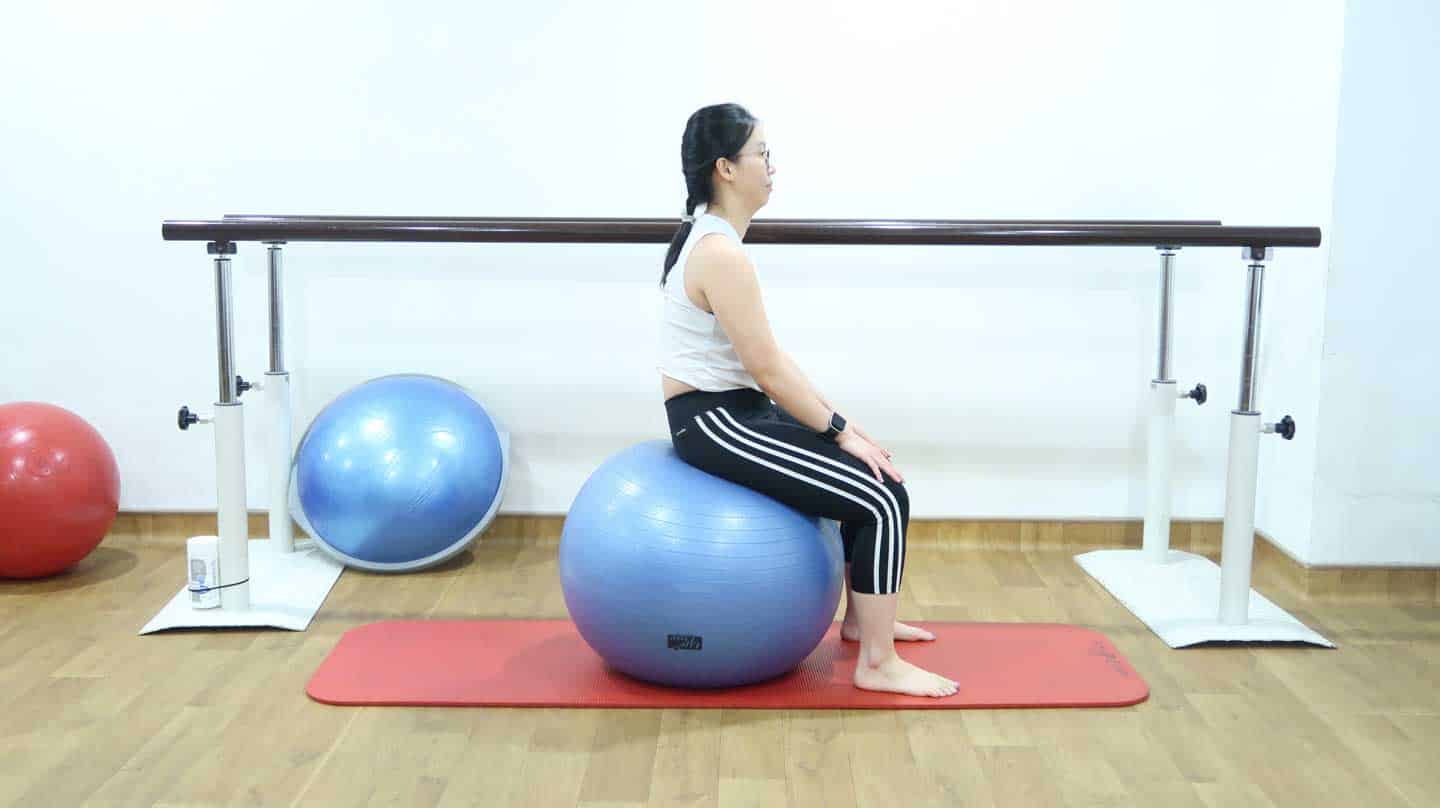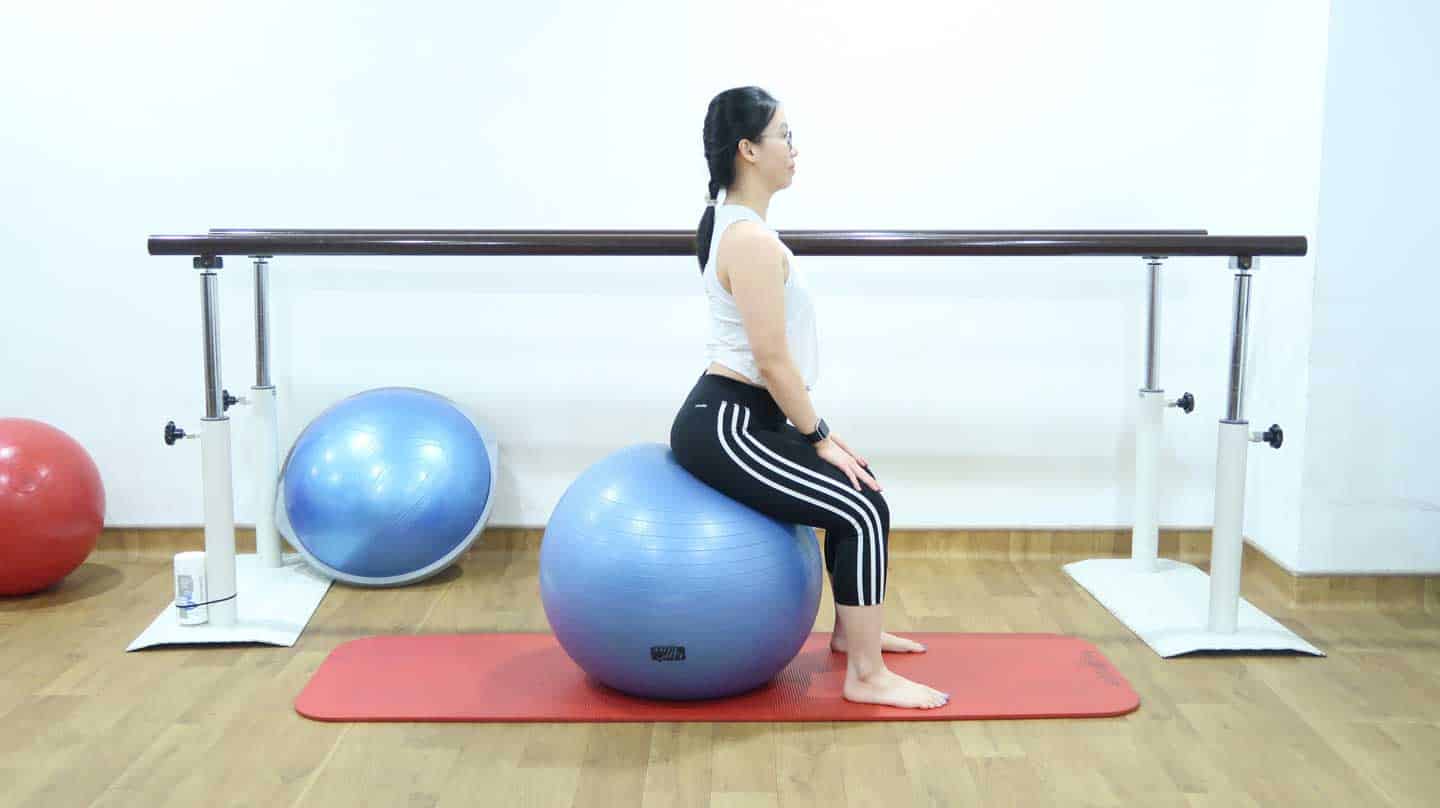COVID 19 Update: Physiotherapy Open. Group Fitness Now Doing Online Live Classes

Scoliosis Management in Children
Our Spine is Important
Without our spine we wouldn’t be able to sit up, stand, walk or run.
The spine provides structural support for the head and body. But it does not stop there. The most important aspect of the spine is its ability to provide support while having a large range of flexible motion.
It also protects the spinal cord, nerve roots and many of the body’s internal organs. it’s one of the most complex parts of the human body, as it needs to fulfil so many different roles.
Needless to say, the spine is a lot more than just a few bones.
So given all this complexity, it’s very common for people to have spinal problems. For most of us, it’s just some back pain or lack of flexibility. For other people, it can be a significant change in the way the spine functions. Scoliosis is one of these changes.
Contents
What is Scoliosis?
The technical definition of Scoliosis is:
“A lateral spinal curvature of 10° or greater with vertebral rotation, assessed using the Cobb method.”
In much simpler terms, it’s a condition that causes the spine to curve sideways into a C-curve or S-shaped curve.
In more severe cases of Scoliosis, you can actually see that the person looks asymmetrical: it might look like one of their shoulders is higher than the other, or perhaps it looks like they’re leaning over sideways. In most mild cases, it’s very hard for other people to see the difference.
Scoliosis curves can occur at any part of the spine, but the most common regions are at the Thoracic (upper back) and Lumbar (lower back) regions.
Type of Scoliosis
Kids of any age and even infants can have Scoliosis. It can be classified as
- Congenital (existing since birth),
- Neuromuscular (As a result of Muscle or Brain issues),
- or Idiopathic (a fancy medical word that means “We don’t know why”).
Approximately 85% of Scoliosis cases are Idiopathic. This means that the vast majority of Scoliosis sufferers don’t have any clear cause.
Idiopathic Scoliosis can be further classified by the age of onset:
- Infantile (0-3 years),
- Juvenile (4-10 years),
- and Adolescent (11-18 years).
Adolescent Idiopathic Scoliosis accounts for approximately 90 % of cases of idiopathic Scoliosis in children, and especially affects children when they are growing the most.
This means that the majority of Scoliosis sufferers were not born with the condition, and have no clear cause apart from ‘growing up’ during their teen years.
What are the Symptoms of Scoliosis?
As mentioned earlier, the Spine is one of the most important and complex parts of the human body. As a result, when something is not right, a range of complexities can arise.
Scoliosis symptoms run the full spectrum, depending on the severity of the curve—from painless and subtle to debilitating with visible deformity, respiratory or cardiac problems. There is also an emotional and psychological element to more severe cases, as people around them can see the condition.
With all that mentioned, it’s clear that Scoliosis can significantly impact a child’s quality of life.
Visible Signs of Scoliosis:
When the spine is curved, there are often visible signs, such as:
- Tilted, uneven shoulders, with one shoulder blade protruding more than the other,
- Prominent ribs on one side,
- Uneven waistline and one hip higher than the other.
With this poor body alignment, the muscles surrounding the spine will be imbalanced. The muscles on one side of the body can be weak and lengthened while the other side will be tight and taut.
Scoliosis can also cause uneven weight to be carried on the spinal discs (the soft cushions between each spinal segment). This can cause back pain or even worse, nerve root compression.
The good news is that most cases are not too extreme. However, as the spine is so important, all cases should do exercises to minimise the problem.
Scoliosis Can be Treated and Managed
There are two different stages of Scoliosis. While the body is still young and growing, it is possible to redirect that growth to minimise the extent of the Scoliosis.
Once the body is fully grown, it is nearly impossible to fully remove the unwanted curve.
As a result, realistic treatments focus on Reducing the Curve, not eliminating it altogether. Scoliosis is a life-long condition, but with the right programmes, it can be pain-free for most people, without the need for dangerous surgeries.
The Two Elements of Treatment
In extreme cases, children will often need specially-built braces to resist further growth in the wrong direction. There are special Scoliosis bracing specialists for these cases.
For most cases, a professionally-designed set of exercises can help to re-train the body to minimise the curvature. Did you know that exercise is one of the key treatments for a Scoliosis management plan?
This is where Clinical Pilates comes into picture. Clinical Pilates is a well-structured and specifically tailored exercise program designed by a certified Physiotherapist with Specialist Clinical Pilates training.
This Clinical Pilates programme is specifically designed for each person, depending on their type and location of Scoliosis. It can help to slow down the progress of the spinal curvature as well as strengthening your muscles and improving posture.
By strengthening various postural muscles, and relaxing others, the aim is to promote symmetry within the spine to regain trunk alignment. With improved function and strength, it can take some of the stress off the scoliotic spine and eventually living a pain-free life.
Before commencing Clinical Pilates, a thorough full body assessment is performed to evaluate the areas of weakness. From here, the Physiotherapist will create a programme of exercises that’s suitable for the child.
How Can Clinical Pilates Help Children with Scoliosis?
1 – Clinical Pilates helps to improve core strength and posture.
Clinical Pilates exercises are all about activating your core muscles which are all the deep abdominals, back muscles and muscles around the pelvis. These muscles are designed to protect the spine by creating a sturdy rod that limits excessive movement in any direction.
With a strong core, comes a strong body which allows your child to walk better, run faster, or even participate better in social activities outside of school.
2 – Clinical Pilates Increases functional movements and flexibility.
With stretching exercises and proper breathing techniques incorporated in Clinical Pilates, children will gain awareness of their own body targeting muscles that are often neglected. They will learn how to move their spine and limbs efficiently to their full functional level and to be able to self-correct their spine’s position during their daily activities.
Clinical Pilates elongates and strengthens muscles, improving muscle elasticity and joint mobility which will create a balanced musculature that can alleviate pain and reduce the potential for injury now and as they continue to grow into adulthood.
3 – It Improves their mental health and well-being
Clinical Pilates can guide kids to a stronger body and a more relaxed state of mind. The most obvious benefit is an improved range of motion, a more natural walk, and better ease in fitting in with society.
With a stronger body and better participation among their peers, it will definitely increase children’s self-esteem and confidence.
Types of Clinical Pilates Exercises for Scoliosis
If you think your child has Scoliosis, it’s a good idea to see a Paediatric Orthopaedic Surgeon to obtain an accurate diagnosis on the severity and type of the Scoliosis curve. The first step is getting an accurate diagnosis that includes the curve degree, its shape, and location.
Without an accurate diagnosis, it is difficult to design the best possible programme. Once your child has a clear diagnosis, it’s time to see a Physiotherapist with Clinical Pilates training.
The following exercises are some examples of Clinical Pilates used in the studio. The following three can be safely performed at home, however for proper results, you should see a specialist.
Exercise 1 – Mermaids


‘Mermaids’ is a really good Clinical Pilates exercise that works on the side of the body.
It’s a wonderful lateral flexion exercise (‘side bend’ exercise) that helps to open up and stretch out the tightness at the side body from the ribs to the pelvis. It can be used as a gentle warm-up exercise as well as a cool down after an exercise routine.
Exercise:
Sit on the floor with both your legs folded to the right side. Sit up tall as though there is a helium balloon pulling you from above your head.
Keeping your right hip glued to the ground, extend your right arm straight above your head and try to reach to the opposite side like creating a rainbow with your right arm.
To stretch your sides further, slowly move your left hand further away from your body.
Now using your abs, bring back the torso up and sit back up straight.
Repeat this movement for 2-3 times, then switch sides. You can do a double set on the tighter side of the body. Do these exercises slowly – they are not performed in the same manner as a gym workout.
Exercise 2 – Shoulder Bridge


Shoulder Bridge is a great exercise that encourages the articulation of the spine in a proper and functional manner, while strengthening your back and glute muscles (‘bum muscles’) at the same time.
It’s a core stabilisation exercise too as it engages your trunk and pelvic floor muscles.
Exercise:
Lie down on your back in a neutral position. With your knees bent, start tilting your pelvis.
Next, slowly lift your back, vertebrae by vertebrae to create a diagonal straight line, all the way from your knees to the shoulder. Make sure the knees are parallel and there is no tension on your upper body.
Hold this position for 5 seconds and then lower your spine vertebrae by vertebrae, starting from your chest to your pelvic slowly on to the mat again. Repeat this exercise for 10 to 15 repetitions.
Exercise 3 – Seated pelvic tilts


Seated pelvic tilts is another fantastic exercise for those who have Scoliosis.
It helps to activate the core and improves strength in the lower back muscles too. This subtle spinal movement often provides relief especially when there is back pain. As children spend most of their time sitting in classrooms, this exercise will benefit them a lot in terms of maintaining good sitting posture and endurance.
Exercise:
You can either do it on a chair or a gym ball to make it more challenging to the core. Always ensure that your hip level is higher than your knees in sitting.
Sitting up nice and tall with your feet shoulder-width apart, try to imagine your pelvis as a bowl of soup. This will be your starting position.
Inhale and start to engage your core. Exhale and tilt your pelvis which is the bowl of soup backward. Inhale as you tilt your pelvis forward to the starting position. Do 5 to 10 reps.
There are Many More Exercises:
These are just a few examples of Clinical Pilates exercises that can be done on a daily basis.
Regularly completing this routine can help relieve tension and other symptoms of Scoliosis, but if you’re looking for a more specialised exercise routine to prevent long-term progression of your condition, you should consult a Clinical Pilates instructor.
Going into Adulthood with Scoliosis: What to Expect?
Most people think of Scoliosis as a condition that affects only adolescents — not something adults struggle with. But every child with Scoliosis eventually becomes an adult, and the belief that curves don’t progress during adulthood is a myth.
As the joints degenerate and bone density reduces with age, the Scoliosis could worsen with a progression of 0.5 to 2 degrees a year. Some studies have shown that certain men and women who had Scoliosis in childhood may experience some difficulties with physical activity, social activities, body image and sexual activity.
In worst-case scenarios, Scoliosis could lead to conditions alongside Scoliosis down the line such as Degenerative Disc Disease, Spinal Stenosis, Spondylolisthesis, Osteoporosis and Arthritis.
Going into Adulthood with Scoliosis: What to Expect?
Most people think of Scoliosis as a condition that affects only adolescents — not something adults struggle with. But every child with Scoliosis eventually becomes an adult, and the belief that curves don’t progress during adulthood is a myth.
As the joints degenerate and bone density reduces with age, the Scoliosis could worsen with a progression of 0.5 to 2 degrees a year. Some studies have shown that certain men and women who had Scoliosis in childhood may experience some difficulties with physical activity, social activities, body image and sexual activity.
In worst-case scenarios, Scoliosis could lead to conditions alongside Scoliosis down the line such as Degenerative Disc Disease, Spinal Stenosis, Spondylolisthesis, Osteoporosis and Arthritis.
It’s Not All Doom and Gloom!
The good news is that if you start managing the problems today, you minimize the problems tomorrow.
Clinical Pilates has been clinically shown as an effective management tool for Scoliosis of any severity level. When doing a proper management plan, you can expect to reduce pain and muscle-stress, and you can live a high-quality life.
Don’t let the Scoliosis curve be ahead of you. Take charge, fix it and keep your spine healthy and moving!
All Fit Fitness Sdn. Bhd.
Trading As
Body in Common
© 2018-2021 by All Fit Fitness Sdn. Bhd